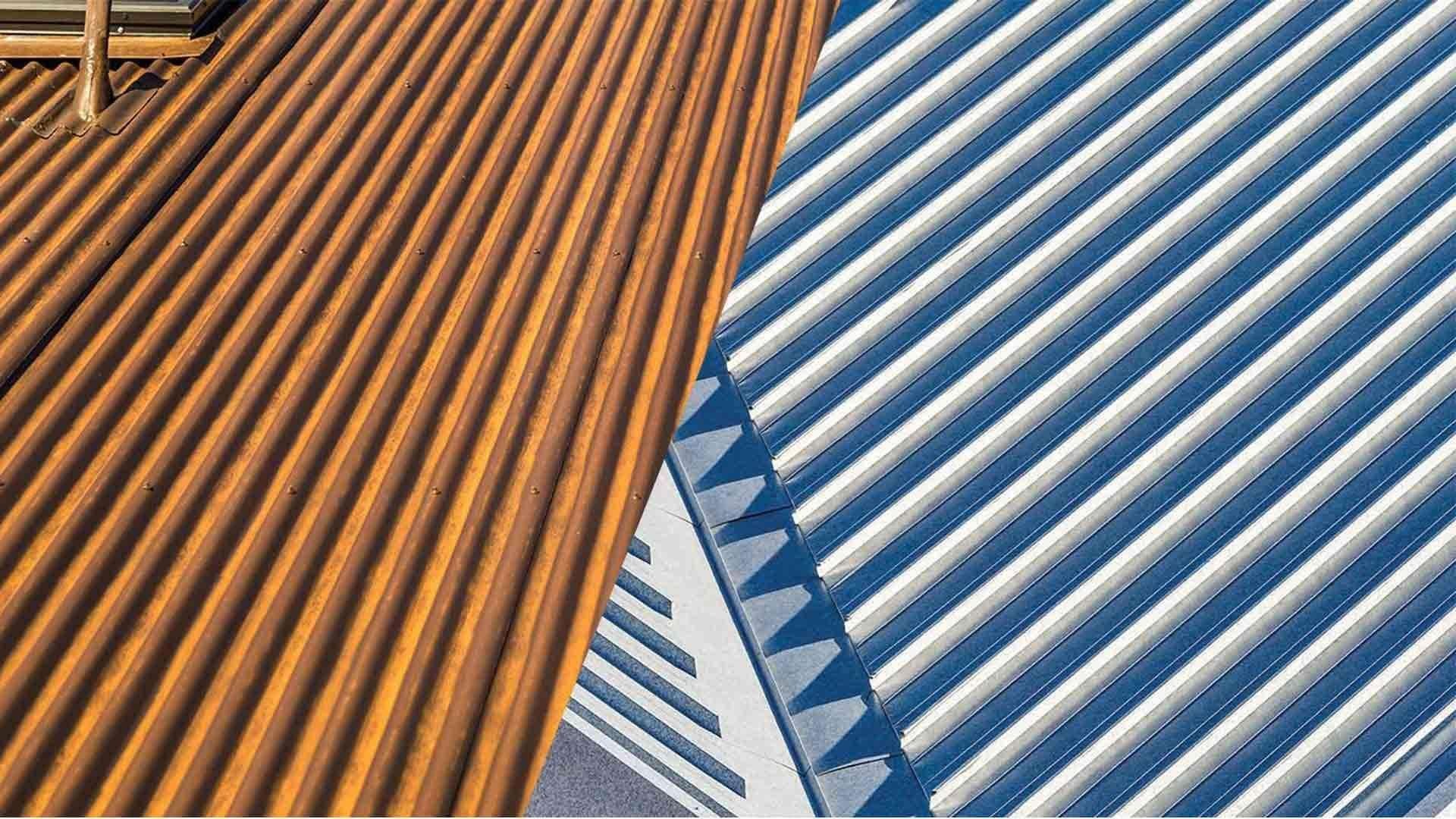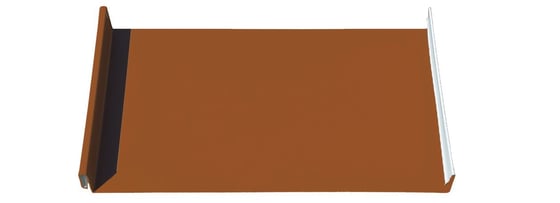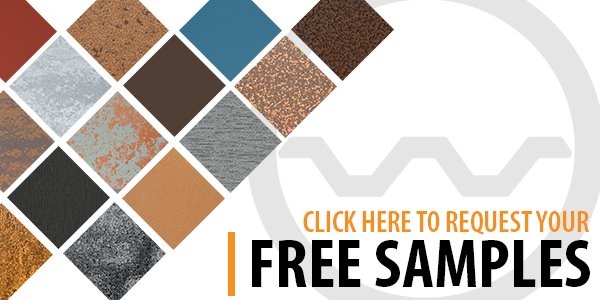Standing Seam vs. Exposed Fastener Metal Roofing: Pros And Cons
Roofing | Corrugated Roofing | Standing Seam | fastener system
It’s easy to choose things like color for your metal roofing, but have you thought about how your new roof will attach to your home? This is one aspect of roofing that we see most often overlooked. As long as the roof is securely attached to your house, what’s the difference? It might not seem important, but the connection actually plays a role in the roof’s longevity and its performance.
Metal roofing has two main connection strategies: exposed fastening and concealed fastening, commonly known as standing seam.
At Western States Metal Roofing, we have manufactured panels in both types of connections for over 20 years. We are often asked about the differences between the connections and want to make sure you are informed about each type of fastening system.
In this article, we will go over the pros and cons of both fastening systems.
What Is A Standing Seam Metal Roof?
A standing seam metal roofing system features panels consisting of formed sheet metal with vertical ribs at the panel edges, installed by lapping and interlocking edges of adjacent panels. The panels are attached to the substrate using concealed clips and fasteners.
What Is An Exposed Fastener Metal Roof?
An exposed fastener metal roofing system is when panels are fastened directly onto the roof deck with screws that penetrate the panels. The screw heads are left visible, which is where the name “exposed fastener” comes from. Corrugated or PBR panels are examples of exposed fastening metal panels.
Advantages Of Exposed Fastener Roofing
- More affordable
- Less accessories required
- Easier installation
- Readily available
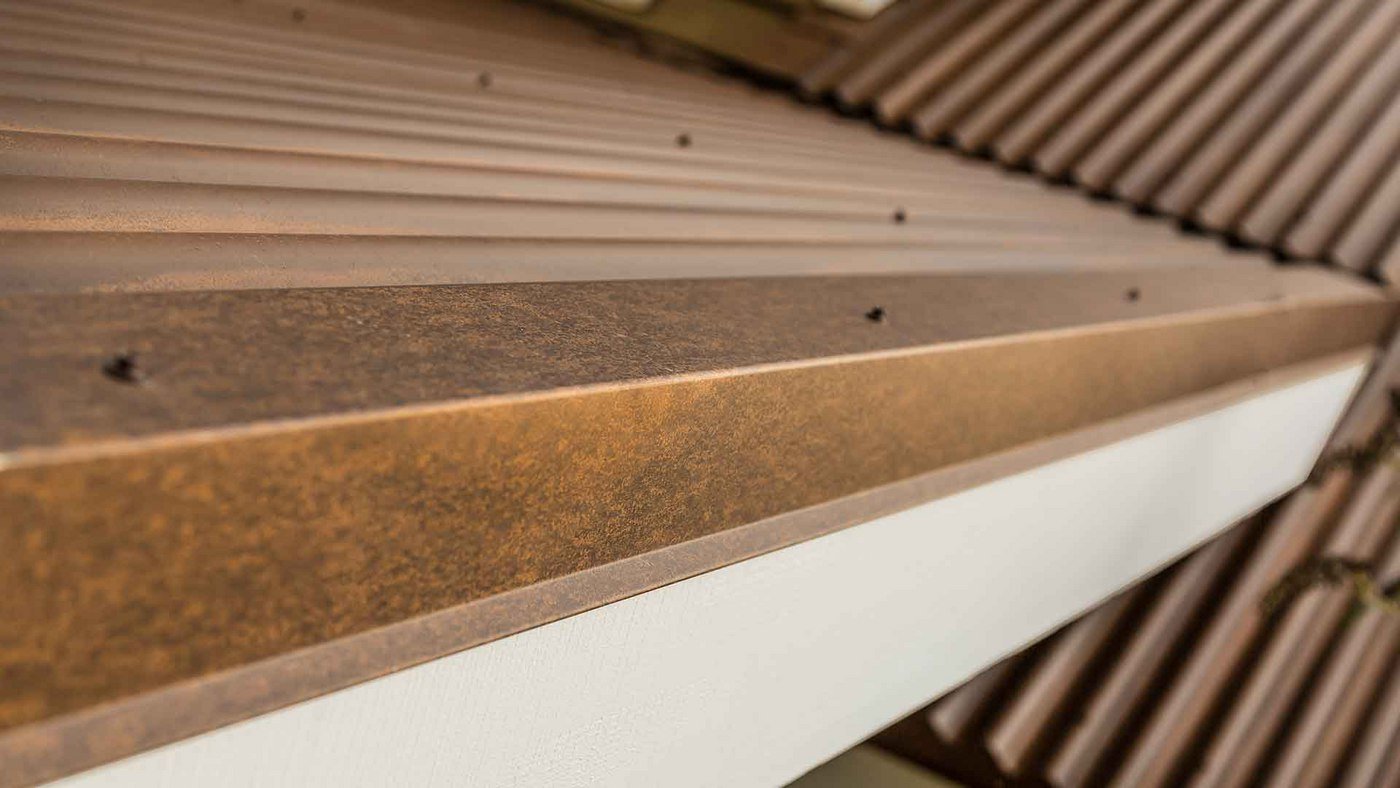 More Affordable
More Affordable
One of the biggest advantages of exposed fastener panels is that they cost less than standing seam. Depending upon the gauge and paint system the cost savings will be at least 50%. There are several factors that attribute to its affordability.
Less Accessories Required
Since exposed fastening roofing systems are installed just by using fasteners, you don’t need to buy any clips. In addition, you need less trim and flashing. Standing seam trim requires purchasing multiple pieces of trim for each roofing condition. For example, a ridge cap for an exposed fastener panel is a one piece system. That same ridge cap for standing seam is a three piece system. Purchasing additional trim and fasteners will substantially increase the overall cost of the roof.
Lighter Gauge Metal
Exposed fastener panels are usually made in a 24, 26, or 29-gauge metal, where standing seam is more often seen in a 22-gauge or 24-gauge metal. Remember, the higher the gauge, the lighter and thinner the metal. This means that exposed fastener panels are usually thinner and therefore less expensive than standing seam panels. Steel in a 24 gauge steel weighs 30% more than 26GA which means a price increase of approximately 30%.
Easier Installation
An exposed fastener roof is an easier and faster installation than a standing seam because it requires fewer steps. Since the installation requires a simpler skillset, more contractors are qualified to install exposed fastening systems. Having more contractor options coupled with less labor time means that these systems are generally less expensive to install.
DIY Install Opportunity
Easier installation makes exposed fastener panels a great opportunity for a DIY (do it yourself) project. You will save even more money this way by doing the labor yourself.
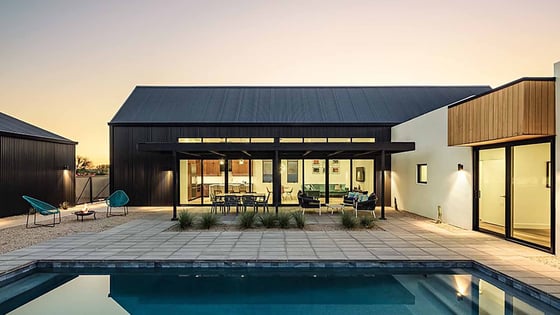 Matte Black® metal roof in 7/8" Corrugated
Matte Black® metal roof in 7/8" Corrugated
Readily Available
Exposed fastener panels are more common and easier to find. They’re sold in almost any home improvement store, although you will find a much greater panel and color selection when going through a metal manufacturer.
Disadvantages of Exposed Fastener Roofing
- More maintenance required than standing seam
- Weak leak resistance
More Maintenance Required Than Standing Seam
Although metal roofing generally does not require maintenance, they need to be inspected regularly to prevent any problems from developing further.
Since the fasteners are exposed on these panels, the fasteners need to be checked and possibly tightened during inspection to avoid leaks. Foam closures should also be checked at this time to make sure they are still in good condition. The roofs should also be checked for leaf buildup and cracked sealant.
Weak Leak Resistance
Corrugated panels can require hundreds of fasteners to keep the roof in place. All of these penetrations in the roof leave a chance for moisture to get in. If the fasteners are not properly installed or become loose, the roof can be vulnerable to leaks.
Advantages Of Standing Seam Roofing
- Fewer fastener replacements
- Concealed fasteners are more weathertight
- Better with expanding and contracting of metal
- Improved looks
- Suitable for very low sloped roofs
- Compatible with solar panels
Fewer Fastener Replacements
Some standing seam systems will use clips as opposed to fasteners. For the kind that has fasteners, having them concealed ultimately protects them from the elements. By not being exposed to water, wind, or debris, they are less prone to corrosion and will not have to be replaced as often as fasteners that are left exposed.
Concealed Fasteners Are More Weathertight
By having the fasteners hidden or using clips where there are no penetrating holes into the roof, standing seam are more resistant to leaks. On the contrary, exposed fasteners leave gaps between the fasteners and the panels. This allows water to come in and can eventually lead to leaking and overall damage.
Expanding And Contracting of Metal
With temperature changes from hot to cold, metal will expand and contract. As the metal panels go through this process over and over, it is likely to eventually affect the tightness of the roof’s screws.
Improved Looks
While aesthetics are subjective, the look of standing seam is most often preferred for its clean lines and sleek appearance.
Suitable For Very Low Sloped Roofing
Standing seam can be installed on a very low sloped roof (1:12 pitch with installation of Butyl Sealant). By contrast, exposed fastener roofing should not be installed on a roof that is less than a 3:12 pitch.
Standing seam can’t be installed on a flat roof (below a .5/12) due to water accumulation that will not have a way to drain off the roof. Eventually, the water will work its way underneath the roofing material resulting in rotting the substrate, color change, or leaks.
If the screws on a standing seam panel become loosened, they are still protected from water as they are concealed. However, loose screws on exposed fastener panels are much more likely to be vulnerable to leaking since they are directly exposed to the elements.
Compatibility With Solar Panels
The seams of a standing seam roof are very convenient if you plan on installing solar panels. A clamp (S-5) attaches the solar panels to the seam/leg of the standing seam roofing panels. There’s no need to drill into the roof. Other rooftop additions, such as snow retention systems, are easily installed in a similar way.
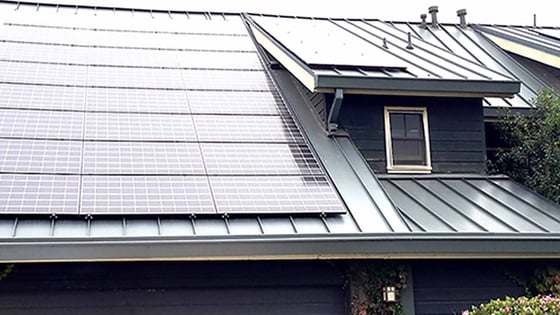 Standing Seam roof in Zinc Metallic® with attached solar panels
Standing Seam roof in Zinc Metallic® with attached solar panels
Disadvantages of Standing Seam Roofing
- Higher cost
- More complex installation
Cost
Standing seam panels are the most expensive metal panel option. They can cost twice as much or possibly more than corrugated panels.
Installation
The installation of standing seam will also cost more than exposed fastener panels since it’s a more complex job. Finding a qualified contractor with the right experience to do the installation may not be easy to accomplish. Also, if a repair needs to be done, it will be time consuming as each individual panel needs to be separated in order for a panel to be replaced.
Which Fastening System Should I Use?
Standing Seam systems are best for those who:
- Want a panel that requires less maintenance.
- Have a low roof slope condition.
- Live in an area prone to severe weather.
- Want a modern design.
- Have a flexible budget.
Exposed fastener systems are best for those who:
- Want to spend less money.
- Want a more informal/industrial looking roof.
- Will do the installation themselves and are looking for an easier DIY project.
Let Us Help You Pick A Color
We sell panels for both types of connections. In addition, we carry each panel in many different colors. Once you choose which type of panel to use, choosing a color is the next biggest decision.
For tips on how to pick the right color for your roof, we suggest reading: Metal Roofing Colors: 5 Tips To Pick The Best Metal Roofing Color.

